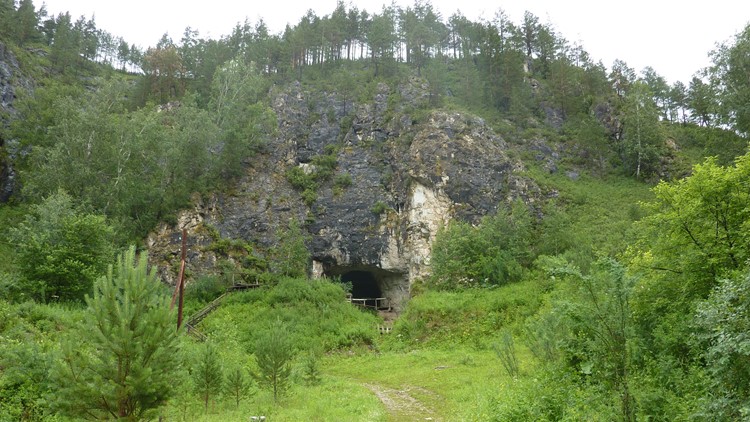Another puzzle piece has been recovered in the quest to understand a close and relatively recent addition to the human family tree.
The discovery sheds light on the most relatable trait yet of mysterious ancient humans known as Denisovans, a sister group to Neanderthals, that was discovered in 2010.
Researchers have recovered a previously missing finger bone fragment that shows Denisovans fingers were almost indistinguishable from those of the modern humans, according to a study published this week in the journal Science Advances. The finding is surprising given the fact that Denisovans are more closely related to Neanderthals.
In the foothills of Siberia’s Altai Mountains lies Denisova Cave, which contains some of the keys to understanding the earliest humans to walk the Earth. The cave is the only place in the world where fossils have been found that belong to Denisovans. Their lineage split from Neanderthals around 410,000 years ago. The new study suggests Neanderthals developed their own distinctive, broad fingers after this split.
Denisovans, who lived during a time that overlapped with Neanderthals, are known only from a few fossils discovered in the cave. But they also left a genetic legacy that lives on today in the DNA of some Asians, Australians and Melanesians. A Denisovan genome was sequenced in 2012 and compared with that of modern humans, revealing the trait.
We don’t know what Denisovans looked like; the fossils that have been found are fragments of bone and teeth. But we do know that they mixed with Neanderthals. One of the fossils found in the cave revealed a daughter of a Denisovan and a Neanderthal, and Denisova Cave is the only site where Neanderthal and Denisovan remains have been found together.
Dating of the Denisovan fossils from the cave show that the oldest fossil was there 195,000 years ago. The youngest Denisovan fossil was between 76,000 and 52,000 years ago. And pendants and needles made of bone were dated between 49,000 to 43,000 years ago, making them the oldest artifacts found in northern Eurasia. The researchers also believe it’s possible that the Denisovans made them.
Denisovans not only interbred with Neanderthals, but with archaic Eurasian humans as well. Because their DNA lives on in some humans today, researchers have reason to believe that they were once lived all throughout Asia. Yet, the fossil record is incredibly sparse.
The finger bone recovered in the cave represents the tip of the pinky finger from the right hand of a young female Denisovan, who was around 13.5 years old when she died 50,000 years ago.
When compared with Neanderthals, ancient and modern humans during different developmental stages, the bone matched up best with modern humans.
Previously, research on the Denisovan molars revealed how archaic they were, including characteristics not found in modern humans. That makes the discovery of the finger bone even more surprising.
Now, the researchers believe that any future potential Denisovan remains should be identified with care because they could be less similar to Neanderthals and closely resemble those of modern humans.



